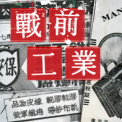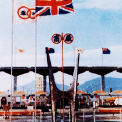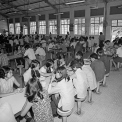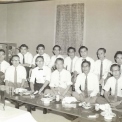Introduction
Manufacturers tended to run their enterprises in a variety of ways. Some attempted to reduce their dependence on suppliers by specialising in technical development. In doing so, they either endeavoured to produce raw materials by themselves or enhance production efficiency by improving their machinery’s performance. Others focused on developing personnel management and maintaining close relations with their workers, fellow manufacturers and suppliers. Another group‘took to the streets’and made direct contact with their consumers, leveraging brand marketing as their main strategy. There were‘brand companies' who saw brand building as their main objective and often made sure their company and brand names overlapped.
Traditional Brand Manufacturers
A company’s using of its trademarks for promotional purposes with the aim of establishing a unique image was far from being unique to the Hong Kong of the post-war years. Between the 1920s and late-1940s, Hong Kong’s major industries included foods, Chinese medicines, spinning and weaving products, flashlights and shoes – all of which were mainly exported. To ensure the visibility of their own output, some manufacturers used trademarks to name their products. For example, cotton yarn produced by Central Textiles used the trademarks ‘Great Joy’, ‘Double Cats’ and ‘Peony’. Some companies had unveiled a number of trademarks before the Japanese invasion of 1941, but focused on developing one to two trademarks after its end in 1945. For example, Chun Au Knitting was founded in 1938 and used several trademarks such as ‘Pig’, ‘Monkey’ and ‘Shell’ for the sweaters and underwear it marketed during these early stages. From 1953 onwards, Chun Au focused on developing and marketing ‘Chicks’ and ‘Golden Shell’ branded underwear. In addition to Amoy Sauce, other manufacturers who actually used their company names as trademarks included Fung Keung Rubber Shoes, Vitasoy and Pak Fah Yeow.
In compiling this archive, our interviewers have spoken to veterans of several historically significant manufacturers. In doing so, they have discovered that most second-generation operators began employing modern management strategies upon taking over the running of their family businesses. Such industrialists not only safeguarded the status of their traditional trademarks, but also expanded their promotion and firmly planted their products’ names in consumers’ minds. For example the founder of Pak Fah Yeow was friendly with many local film directors. This is why you see Pak Fah Yeow billboards in so many movies made around this time. Joining the company in the mid-1980s, a second-generation operator called Gan Fock Wai targeted young people in his promotions on behalf of the brand. To this end, he not only sponsored concerts, sports events, but also online games and other activities – anything that would enhance Pak Fah Yeow’s young, vigorous image.
Other successors did their utmost to expand the product types offered under trademarks that had been handed down for generations. For example, ‘Chicks’ at first only sold sweaters and underwear, but later added woolen underwear and then fashion collections into its product lines. In addition to soy sauce, Amoy began making a wide variety of sauces to satisfy changing appetites as people’s purchasing power grew and their tastes widened. Nor were these new generation manufacturers slow to seize upon modern management methods, integrating product development with market research to create new lines that stayed ahead of consumers’ evolving wants and needs.
Post-war Emerging Brand Manufacturers
In the 1950s, industries such as plastics, metalware, watches and garments began emerging as dominant forces. As these were all labour-intensive industries, manufacturers worked hard to build business by attracting export orders via means of cheaper prices and higher efficiency. As a result, the Original Equipment Manufacturing (OEM) production model became popular in the mid-1960s. In accepting orders from foreign brands for mass production, manufacturers only had to meet production requirements and safety standards. The big advantage here was they did not have to worry about marketing or selling finished, branded products to build business.
By the 1970s, Hong Konggnts and safety standards. The big advantage here was they did not have to worry about marketing or selling finished, branded products to buildSoutheast Asia, Africa, China or other low-cost regions. The aim was to stay competitive by keeping costs down. Other manufacturers adopted a more high-end route by starting to produce and market their own branded products. To successfully make this transition, such manufacturers had to possess certain strengths. They included sufficient funding and the management expertise needed to properly promote and develop brands. For example, after succeeding in 1973, Yangtzekiang Garmenta more high-end route by starting to prbegan acting as an agent selling popular ‘Wrangler’ jeans from the US. As a result, a pair of branded jeans which originally could be had for a little over HK$10 quickly trebled in price. In 1977 Yangtzekiang Garment noticed Hongkongersjeans from the US. As a result, a pair o Leveraging its retail network’s strong sales figures for suits, it subsequently went on to develop the ‘Michel Rene’ brand and its pronounced French-style.
Direct and Indirect Sales Channels
Between the mid-1940s and -80s, Hong Kong was a vitally important market for local brand manufacturers who needed effective retail channels to sell their products to their fellow Hongkongers. Some manufacturers directly operated retail outlets and set up their own shops. For example, in the 1960s Amoy ran ‘three big branches’ in Kowloon City, Hennessy Road and Nathan Road, selling products such as soy sauce, preserved ginger and canned food. Other manufacturers like Pak Fah Yeow appointed and used an exclusive local distributor such as DKSH. The distributor then simplified the sales process by making their products available via outlets such as pharmacies, supermarkets and convenience stores.
Still more manufacturers back then sent salesmen (sometimes senior staff or even the proprietors’ immediate descendants) to sell brands to retailers direct. For example, back in the 1950s, Chung Nam Watch hired salesmen to carry out street marketing. In those days, retailers first had to buy watches on credit. Even when sales were slow, stockists could not return goods, but could negotiate price cuts with Chung Nam. While Chong Hok Hoi, Chung Nam’s second generation operator, was still at school, he took summer jobs with his father’s company. Carrying a leather case weighing up to 30 pounds, he accompanied company salesmen to retail shops all over Hong Kong, learning more about communicating and selling to customers at each store he visited! Back then, salesmen were expected to build up relationships with their retailers. These goals were achieved by social activities such as offering cigarettes, discussing horse racing tips, having tea together or even sponsoring travel trips for retailers and their staff.
How Brands Back Then were Promoted
To develop the local market, manufacturers of the mid-1940s to -70s used to devote a great deal of effort on promotion and publicity. In those days, the annual Hong Kong Products Exhibition (HKPE) was a vital marketing platform where manufacturers invested large sums in preparing their stands. Amoy’s booths were very distinctive and won the exhibition’s booth design award. The company also recruited Miss HKPE from outside the company to represent it at the event. While Amoy’s advertising department was responsible for designing the company’s booths as most of the professionals there came from a creative background, specialist advertising companies were commissioned to develop specific promotional strategies.
To maximize their products’ exposure, manufacturers also placed advertisements in newspapers, on radio and television and even painting giant products on the sides of buildings, trams and buses. Before too long, sponsoring television programs or charitable activities became another popular approach. Needless to say, marketers back then were also familiar with using celebrities as endorsers for their brands. Pak Fah Yeow’s founder had begun inviting stars to grace its promotions as early as the 1960s. Then just 17-years-old, Teresa Teng was invited to come to Hong Kong from Taiwan to help promote the brand. She was elected Pak Fah Yoew’s Charity Queen in the products exhibition. Chung Nam Watch was one of those who used trams, magazines, cinemas and radio and television as platforms for its advertisements. The company also hired local artiste George Lam to star in its TV commercials. One of their advertising scripts really caught the public’s imagination with many Hongkongers repeating “No later, no sooner! With an Octo watch, time is just right!” slogan.
Involving direct contact with actual consumers, retailing was most brands’ major development strategy. Many manufacturers could be said to have such a unique identity, they even possessed the conditions to form into a trade of their own. Although branding products was a comparatively new approach, promotion and marketing were costly, and there was no guarantee of returns. As a result, many local manufacturers were reluctant to take risks and preferred to hold onto the older, seemingly more stable OEM production methods. Some established manufacturers thought that traditional trademarks clearly underlined the word-of-mouth trustworthiness of their products. The new generation of managers deliberately linked such images with a nostalgic style in an attempt to both hang onto older clientele and build a newer base of customers in pursuit of high quality. No wonder that the most successful brands were mostly well established trademarks that had withstood the test of the time.





